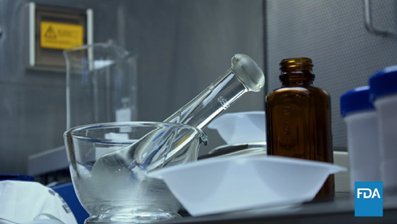SUNDAY TWEETORIAL: For those who follow me, you’ll know that the topic of this week’s #FDA Sunday Tweetorial is among the most critical: food safety. FDA takes our responsibility for assuring safety of the food supply seriously, and food safety is one of my highest priorities
The US has one of the safest food supplies in the world. #FDA continues to make sure the abundant, diverse, and complex global food supply is safe, and that food imported into the US is held to the same standards as food produced at home 

FDA uses several tools to better identify foodborne illnesses and outbreaks. These advances in technology protect consumers, so let’s look deeper at some of these groundbreaking tools and their public health benefit
Let’s start with whole genome sequencing (WGS), a powerful technique that determines the genetic fingerprint of disease-causing microbes with unprecedented precision. #FDA is building a WGS food laboratory network to protect consumers globally bit.ly/2xRAfsa
WGS links human illnesses to identify if an outbreak is caused by a specific food. WGS compares the genetic fingerprint of disease-causing microbes in food to those isolated from ill consumers. Linking illnesses to specific food allows FDA to act quickly to protect public health 

FDA collaborates closely with CDC on WGS, as CDC has sequencing capacity across the US to perform WGS on pathogens from ill people, while #FDA conducts sequencing on pathogens identified in foods and settings like food manufacturing plants bit.ly/2M1RIUO
FDA’s GenomeTrakr is 1st distributed network of food labs to use WGS. It consists of >60 federal, state, university, hospital & int’l labs. GenomeTrakr has sequenced >183k isolates and is regularly sequencing >5k isolates per month. NIH assists by storing & assessing the data 

By sequencing the DNA of pathogens, WGS reveals markers like genetic fingerprint and antimicrobial resistance, and offers clues about geographic source. This helps scientists respond more effectively to food contamination, allowing faster recalls and preventing illnesses 

Robust research has confirmed that WGS provides investigators with a new tool to determine whether or not consumers got sick from the same pathogen or a closely related cousin. This speeds up investigations by eliminating unrelated cases bit.ly/2tbncRl 

#FDA also is developing a new microbiological surveillance sampling program designed to identify patterns that may help predict and prevent future contamination by disease-causing bacteria bit.ly/2tgmW3F bit.ly/2M9pJCA
To help inform consumers, retailers and restaurants during outbreaks, #FDA provides info about specific pathogens, the foods linked to them, and what consumers can do to protect themselves and their families. Our newest page talks about Cyclospora: bit.ly/2KbwuX7
It may seem there are more foodborne illnesses lately, but we’re able to spot previously undetected outbreaks as we apply tools like WGS. By investigating outbreaks, we can determine underlying causes and take steps to prevent problems from reoccurring bit.ly/2tjX1YM
It’s not enough to slow or stop an outbreak. Our goal, through regulation and use of technology, is to shift our food system from one that just reacts to problems to one that prevents them from happening in first place. Food safety is priority #1 from the farm to table
#FSMA implementation is critical to our efforts but more resources are needed to fully implement the #FSMA rules at home and abroad; to provide technical support to industry and growers to get it right; and to conduct inspections to assure compliance bit.ly/2CjBNwE
Recent outbreaks highlight the all-too-real consequences of foodborne illness. They also provide a roadmap of where we must head to ultimately prevent them from happening. I believe we’re heading in the right direction and over time we'll see the benefits of our efforts
Meet the key #FDA leaders dedicated to keeping foods safe and responding to hazards from contamination of all kinds, including toxins in the environment, bacteria from unsafe production practices, and intentional adulteration bit.ly/2MdoCBY
#FDA’s food safety mission covers animals too. The Center for Veterinary Medicine works to keep animal feed and pet food free of the contaminants that not only make animals sick, but can have an impact on human health too bit.ly/2IiWrPr
• • •
Missing some Tweet in this thread? You can try to
force a refresh
















